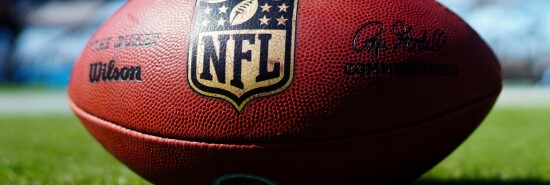
What football can learn from tennis
Eric Felten
Take a look sometime at the NFL’s rule book. It runs some 245 pages. Consider the specifications of the game ball. The rules not only say that the football shall be inflated to such and such pressure (rules that were the object of Deflategate a few years ago) but also that it shall be of a particular size and weigh 14-15 ounces.
One would think that a football could be described as “football-shaped,” but the league is much more specific than that, demanding that the ball “shall have the form of a prolate spheroid.” I have to say that’s one of the most wonderful things I’ve ever read. I think the announcers should begin using the geometric specification in their patter: “Whaddaya think Tony? Did he have both feet down in bounds when he gained full control of the prolate spheroid?”
I think we should join in a campaign to rename the NFL the National Prolate Spheroid League. In fact, I think we should just start using NPSL as the league acronym and see if we can get it to catch on.
If the rules of the game can be described in the language of mathematics, some of the rules are described in monosyllabic slang. Article 6, for example, is devoted to the “Muff,” described in the rule book as “the touching of a loose ball by a player in an unsuccessful attempt to obtain possession of it.” That might seem fairly straightforward, but as always, there are complications that must be explored and made specific. According to the NPSL rule book, “there is no distinction between a player touching the ball with his hands, or with any other part of his body, including his hair, except as specifically provided for.”
Staggering. With Super Bowl LVII in the rearview, Philadelphia Eagles fans can be expected to nurse a grudge that the big game was determined not by the players but by the referees. You’d think it would have helped to have all these rule specifications, but no. Quantity and specificity don’t equal usefulness. The rule book that goes to the trouble of defining what a “player” is (“A Player is a participant of either team who is in the game”) declares that there is no distinction between touching the ball with one’s hands or one’s hair. Really? I defy the NPSL to produce an example of a player picking up a prolate spheroid with his hair.
The NPSL, now that it is in the offseason, might use the time off to study officiating in tennis. The rules of that game are extensive but leave room for players to play without encouraging their opponents to beg for pettifogging fouls to be called. For example, there is the serve. The rules could conceivably specify a maximum or minimum height the ball must be thrown for a serve to be valid. That would encourage players to try to win by invoking rules rather than by outplaying one’s opponent. But instead, this essential part of the game is left largely unencumbered by ticky-tack rules: When in position behind the back line of the court, the server “shall then release the ball by hand in any direction and hit the ball with the racket before the ball hits the ground.”
Such a broad approach to a core part of the game is a main reason pro tennis generally moves along without much in the way of interloping by the judge — that and the speed and accuracy of the computer line-calling system, which requires none of the under-the-hood review that dampens the excitement of pro prolate spheroid. The NPSL could learn something.
Eric Felten is the James Beard Award-winning author of How’s Your Drink?
